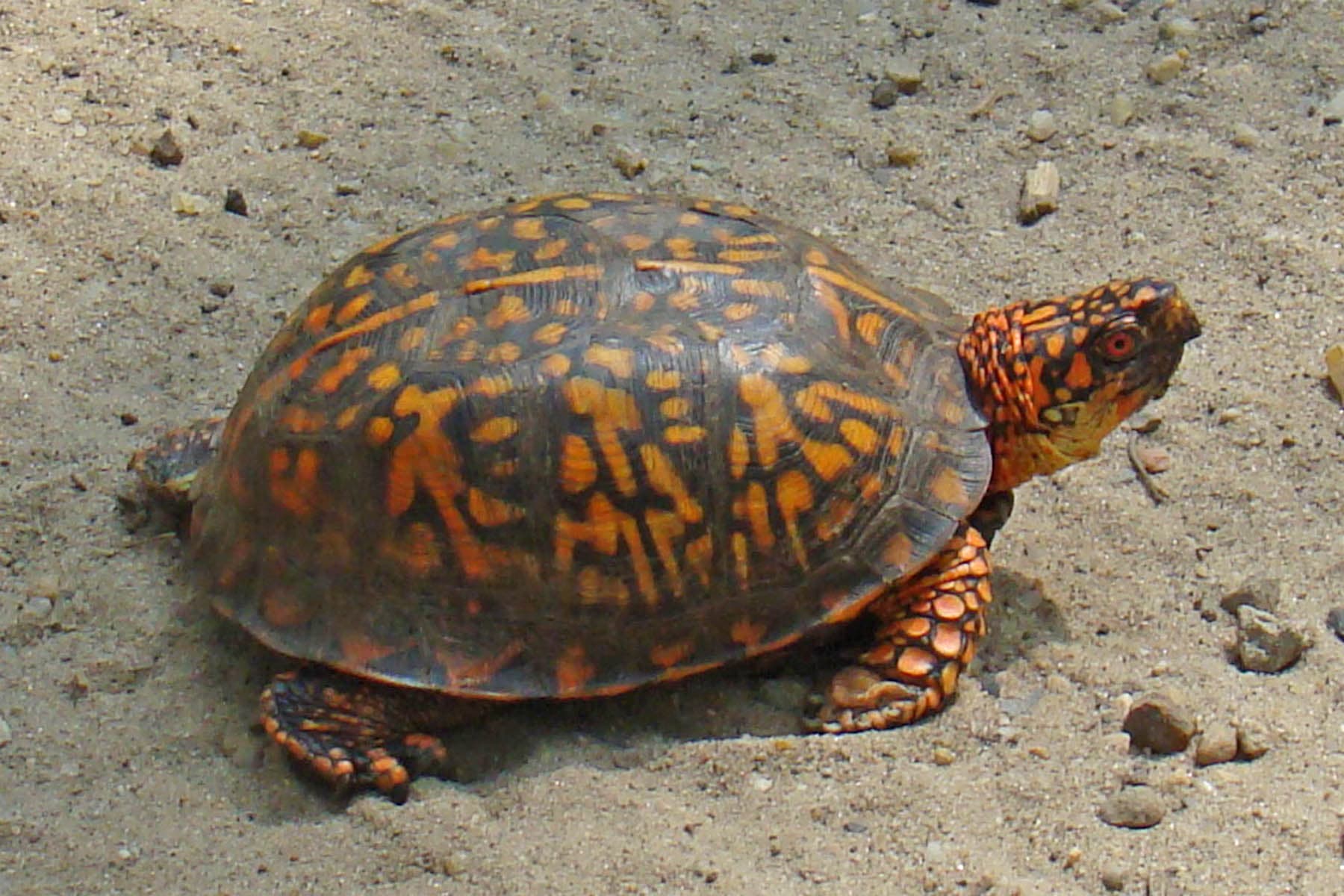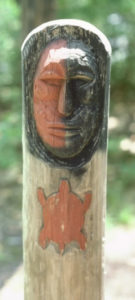Lenape Native: A History of The First New Yorkers
by Betsy McCully
Updated July 17, 2025

Land of the Lenape

Who were the Lenape?
The people encountered by the Europeans in the 1600s called themselves the Lenape, which loosely translates as “the common people.” They called their homeland Lenapehoking, a swath of land that stretched from the Lower Hudson region to Delaware Bay, including portions of New York, New Jersey, Pennsylvania and Delaware. Among Algonquians — Indians of diverse tribes who are united by a common root language — the Lenape are “the Grandfathers,” the first Algonquian-speaking people from whom all others are descended.
The people that settled in the New York City region were the Munsee, so-named because of the particular Algonquian dialect they spoke. The Shawnee-Minisink site in the Delaware River Gap, which is the historic heart of Lenape lands, has been dated to between 9,000 and 13,000 years ago. It’s thought that they migrated into the New York City region around 3,000 years ago. The Lenape called the Delaware River Lenapewihitak, or River of the Lenape. The Europeans called the river the Delaware, after Sir Thomas West, Baron de la Warr, who governed the English colony of Virginia in the early 1600s. Because of their association with the Delaware River, the Lenape were named by Euro-Americans the Delaware.
Despite regional variations in language and customs, the Lenape were united by a complex system of kinship that traced their lineage back to common ancestors. At the time of European contact, they numbered around 20,000, divided into roughly twenty autonomous groups, closely interconnected through clan membership, which was traced through the mother. The Raritan lived on Staten Island and central New Jersey north to the Raritan river valley. The Haverstraw lived on the west bank of the Hudson, and had kinship ties with the Hackensack and Tappan of New Jersey. The Wiechquaeskeck lived on the east bank of the Hudson in the southern portion of the Bronx and Westchester, with ties to the Siwanoy on the north shore of Long Island Sound, including Pelham Bay. The Nyack lived on the east shore of the Narrows, with ties to the Hackensack. The Massapequa, Merrick, and Rockaway lived on western LI; the Matinecock lived on the north shore of Long Island from Queens to Suffolk County, and the Canarsee and Marechkawieck lived in what is now Brooklyn. The names have a familiar ring; look at a map of the New York City region and you will see many of these names preserved as place names.
Clan lands and dwellings were “owned,” or held in trust for the clan by the women as heads of households. Marriage often served as a means of maintaining bonds between different communities who shared the same land resources. The concept of shared land use was fundamental to Lenape society — and utterly foreign to the European system of land tenure. The ascendancy of the European system in North America would prove devastating to the Lenape, whose communal identity was rooted in a land of fluid natural boundaries.

What was the Lenape way of life?
Farming
We know from Contact-era accounts as well as the Lenape’s own oral traditions that the Munsee of the 1600s practiced small-scale farming, growing the revered “three sisters” crops of maize, beans, and squash. Henry Hudson described an Indian house “which contained a great quantity of maize, and beans of last year’s growth, and there lay near the house for the purpose of drying enough to load three ships, besides what was growing in the fields.”
Hunting-Fishing-Gathering
As they had for millennia, the Lenape continued to hunt, fish, and gather wild foods as the mainstay of their diet.

Lenape Cosmology

What happened to the Lenape?
Between 1600 and 1700, the Lenape were decimated by diseases and war. Numbering up to 20,000 prior to European Contact, by 1700 their numbers were reduced to 3,000 at most. Smallpox, malaria, measles, bubonic plague, and other diseases imported by the white man took a terrible toll. Compounding the death toll exacted by killer epidemics were ongoing wars with the Lenape’s enemies the Iroquois to the north and the Dutch to the south. Both together caused many to lose their faith in traditional healing practices. With the loss of their elders who had been the historians and keepers of tradition, their culture unraveled. As the Europeans pushed their land claims further and further into the American wilderness, the weakened and demoralized Lenape finally relinquished any claim to their traditional homeland. The loss of the homeland, Lenapehoking, must have been a devastating blow, for their identity as a people had been bound up with the land for thousands of years. They now became exiles and wanderers, dependent on the hospitality — and subject to the hostility — of other tribes. With the severing of their ancient bond to the land, the source of their visions dried up. In the words of a Delaware in the early nineteenth century, “No man can have visions because the earth is no longer clean.”
By 1760, most Delawares (as they came to be known) had moved to Ohio. For a detailed account of the series of removes westward and northward undertaken by the Lenape through the eighteenth and nineteenth centuries, see Robert Grumet’s books on the Lenape (scroll to the reading list below).
The Masked Being first revealed himself to three abandoned boys in the woods. He showed them his faraway home in the mountains above the earth, and before returning he gave the boys courage and strength to endure. Later, in a time of great crisis for the Lenape people, he reappeared and instructed the boys, now grown into men, to carve his face in wood — the effigy of Mesing’w — and paint it red on the right side and black on the left. He promised to give the mask power so that it would do whatever was asked of it; and when a man wore his mask in a sacred ceremony, the Mesing’w promised to be there, living among the people.
The Big House religion emerged in the 1800s as a spiritual revival among the Lenape to sustain them during the diaspora, when they were forcibly removed from their traditional homeland. In a ceremonial dance performed every year, Mesing’w was represented by an effigy face painted half red and half black. His representative, clad in a bearskin robe, wore the mask, and shook a turtle shell rattle as he sang a vision song and danced. For twelve days, the people offered prayers and thanks in the Big House, burning cedar smoke for purification. The Big House religion declined when the US government privatized tribal lands and abolished tribal government at the turn of the twentieth century. The last ceremony was held in 1924.

Where are the Lenape today?
However fragmented and dispersed the Lenape became, their culture and identity persists. Today, the Delaware number about 10,000. They reside within the Cherokee Nation, and are mainly concentrated in Oklahoma; Moraviantown in Ontario, Canada; and Brotherton, Wisconsin. A few speakers of the old language remain, but that may increase as there has been a recent revival of interest in the old tongue, as well as an attempt to restore religious songs, dances, and ceremonies.
Lenape Reading List
Lenape Links
c. Betsy McCully 2018-2025
